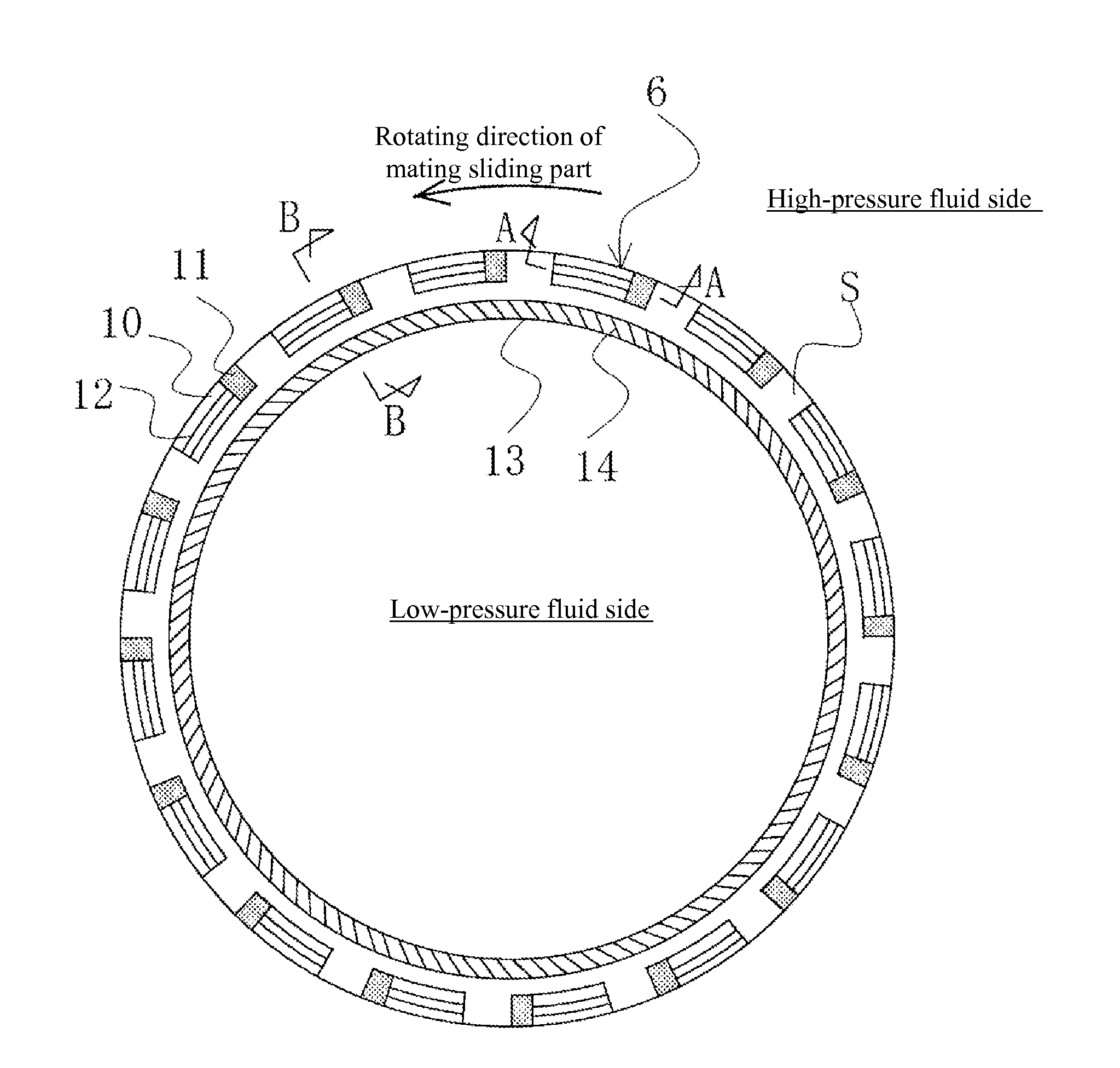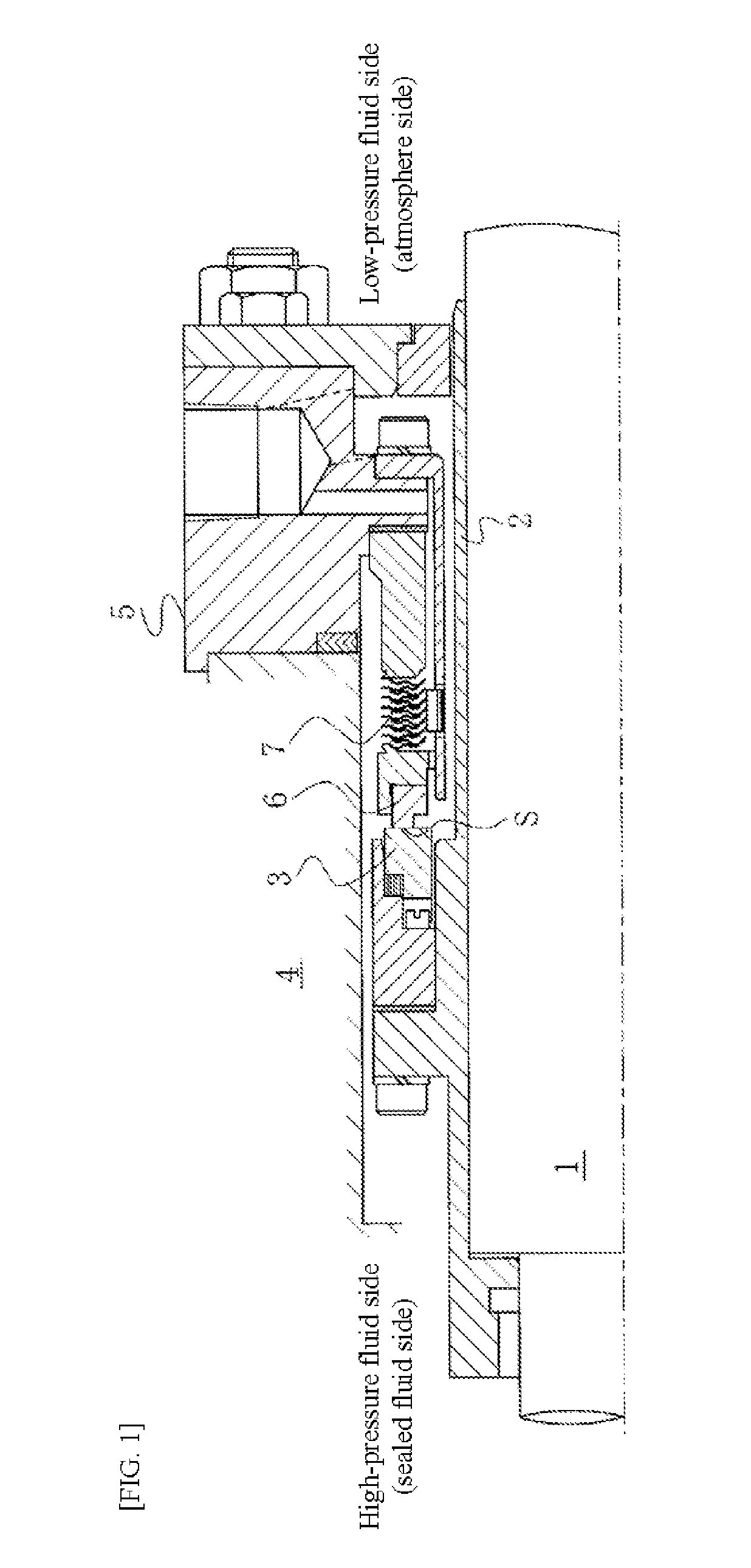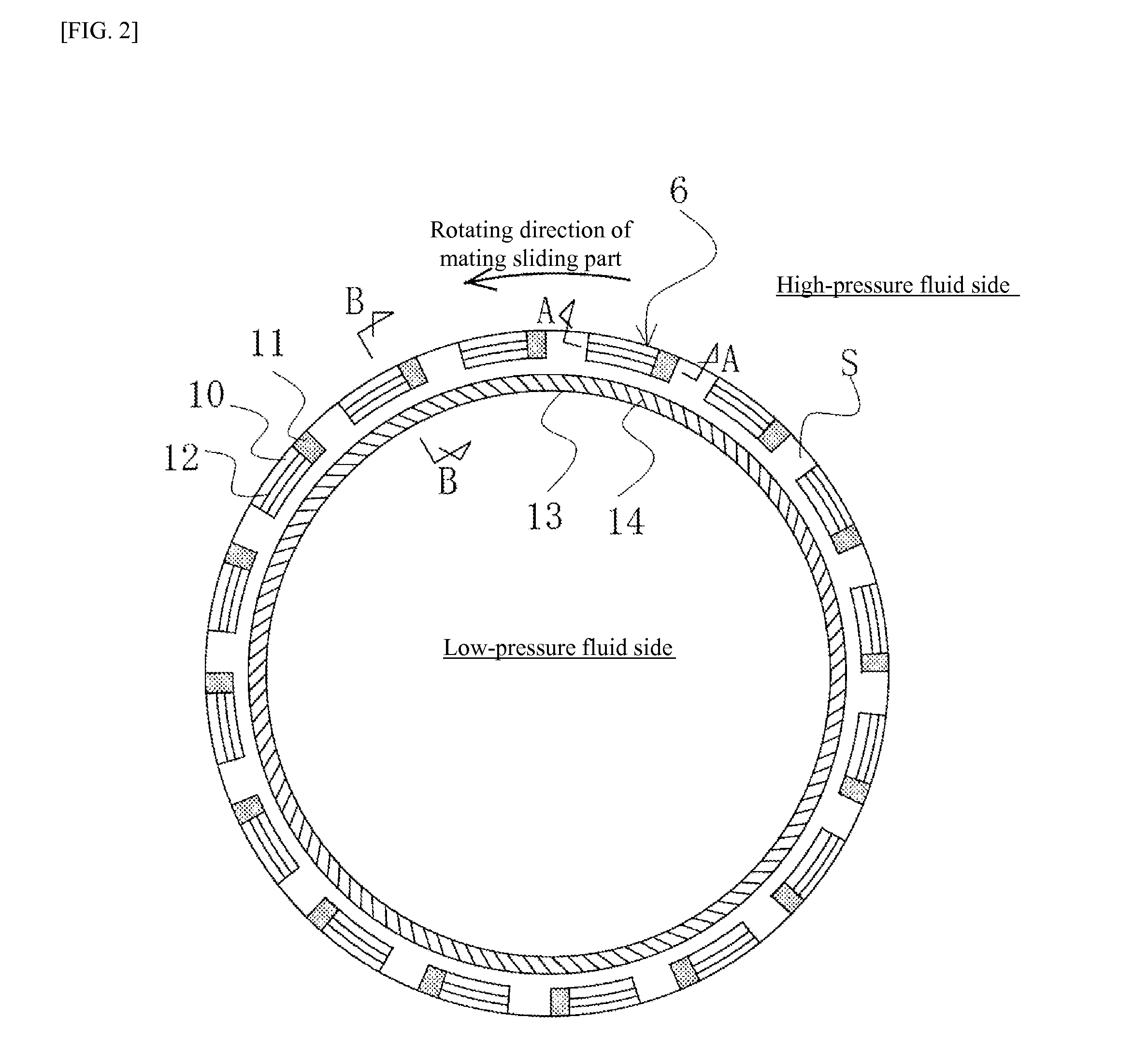Sliding component
a technology of sliding components and components, applied in the direction of engine seals, engine components, mechanical devices, etc., can solve problems such as mass leakage, and achieve the effect of reducing the pressure acting on the sealing fa
- Summary
- Abstract
- Description
- Claims
- Application Information
AI Technical Summary
Benefits of technology
Problems solved by technology
Method used
Image
Examples
embodiment 1
[0048]A sliding component pertaining to Embodiment 1 for carrying out the present invention is explained by referring to FIGS. 1 to 3.
[0049]FIG. 1 is a front section view showing an example of a mechanical seal for general industrial machinery.
[0050]The mechanical seal in FIG. 1 is of the inside type, which is the type that seals the high-pressure fluid (sealed fluid) that tends to leak from the outer periphery to the inner periphery of the sealing face, comprising: a circular rotating ring 3 that constitutes one sliding part provided via a sleeve 2 on a rotational axis 1 for driving a pump impeller (not illustrated) on the high-pressure fluid side (sealed fluid side) in a manner rotatable together with the rotational axis 1; and a circular stationary ring 6 that constitutes the other sliding part provided on a seal cover 5 fixed on a pump housing 4 in a manner not rotatable but movable in the axial direction, wherein the sealing faces S of the two that have been mirror-surface-fini...
embodiment 2
[0064]The sliding component pertaining to Embodiment 2 of the present invention is explained by referring to FIGS. 4 and 5.
[0065]Embodiment 2 is different from Embodiment 1 in that deep pressure-reduction grooves are added, but the remainder of the constitution is the same as in Embodiment 1 and therefore the same members also used in Embodiment 1 are denoted by the same symbols and are not explained redundantly.
[0066]In FIG. 4, circular deep pressure-reduction grooves 15 are provided on the sealing face of the stationary ring 6 having the extremely shallow grooves 10 and deep fluid-introduction grooves 11, in a manner facing the low-pressure fluid side of the extremely shallow grooves 10 and deep fluid-introduction grooves 11, for separating the extremely shallow grooves 10 and deep fluid-introduction grooves 11 from the sealing face on the low-pressure fluid side and thereby reducing the pressure acting upon the sealing face on the low-pressure fluid side. The deep pressure-reduct...
embodiment 3
[0070]The sliding component pertaining to Embodiment 3 of the present invention is explained by referring to FIGS. 6 and 7.
[0071]Embodiment 3 is different from Embodiment 2 in that circular pumping grooves are provided on the sealing face facing the low-pressure fluid side of the deep pressure-reduction grooves, but the remainder of the constitution is the same as in Embodiment 2 and therefore the same members also used in Embodiment 2 are denoted by the same symbols and are not explained redundantly.
[0072]In FIG. 6, the circular pumping grooves 14 are provided not on the sealing face S facing the low-pressure fluid side as in Embodiments 1 and 2, but they are provided on the sealing face S facing the low-pressure fluid side of the deep pressure-reduction grooves 15. Also, ideally, the pumping grooves 14 are provided on the surfaces of circular extremely shallow steps 13 that are lower than the sealing face S, as in Embodiments 1 and 2.
[0073]As shown in FIG. 7, when the pumping groo...
PUM
 Login to View More
Login to View More Abstract
Description
Claims
Application Information
 Login to View More
Login to View More - R&D
- Intellectual Property
- Life Sciences
- Materials
- Tech Scout
- Unparalleled Data Quality
- Higher Quality Content
- 60% Fewer Hallucinations
Browse by: Latest US Patents, China's latest patents, Technical Efficacy Thesaurus, Application Domain, Technology Topic, Popular Technical Reports.
© 2025 PatSnap. All rights reserved.Legal|Privacy policy|Modern Slavery Act Transparency Statement|Sitemap|About US| Contact US: help@patsnap.com



